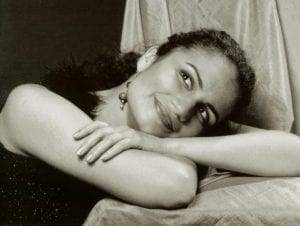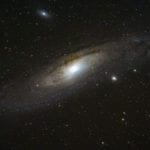Some people go through life following a traditional or linear career path, others listen to the fire inside and pursue it relentlessly. Diane Nalini de Kerckhove fits into the second category. She has managed to merge her passions for physics, music, new cultures, and traveling into her career, achieving amazing accomplishments in each facet and maintaining a constant hunger for education.

Dr. de Kerckhove was attracted to physics early on in her life while at Dawson College, a pre university program (or CEGEP) in Quebec, Canada. “That was where my passion for physics was awoken,” she says. “I had some very inspiring physics teachers at Dawson, particularly Richard Shoemaker, who presents physics so logically that I felt I couldn’t really do anything else… it was so alluring.” At the same time, another passion of hers was launched into action when Dawson hired de Kerckhove for her first paid gig as a jazz singer.
She completed her undergraduate degree in Honours Physics at McGill University in Montreal, where she was a national Loran Scholar and held the Greville Smith scholarship and the NSERC Women in Engineering and Science research scholarship.
“McGill’s Honours Physics programme was quite intense,” she says, “and I balanced that by taking all my electives in music. During this time, I started gigging regularly around Montreal in local jazz clubs and restaurants on weekends, and I also played the Montreal Jazz Festival for the first time.”
Pursuing both music and physics worked well until she came to a crossroads at the end of her undergraduate degree. “I was awarded the Rhodes Scholarship to study at the University of Oxford and also a recording contract with a small Montreal indie jazz label. I received good advice from a musician friend who told me that I’d always be able to record a record in the future, but the Rhodes would only come into my life once.”
So, de Kerckhove went off to England to start her PhD at Oxford. Choosing a specific area within physics to pursue was a tough decision she recalls, “I was drawn to astronomy but when I arrived at Oxford, I was fascinated by a poster I saw on the wall of the nuclear physics department depicting how x-ray spectroscopy had been used to authenticate a Vermeer painting by analysis of the pigments for lead and other metals and matching it to known Vermeer paintings. That, I thought, was the cat’s meow: a technique that used physics to elucidate art.”
She completed her PhD in the Department of Materials, working in applied nuclear physics. Her research focused on developing a novel “beam-rocking” system that she used to study strain in various alloys. “I also got to do a lot of general analysis work on some pretty nifty samples,” she says, “including looking at arsenic distribution in Napoleon Bonaparte’s hair, looking for trace impurities in Ötzi (the Iceman’s) hair and nails, and several Inca mummy samples too.”




